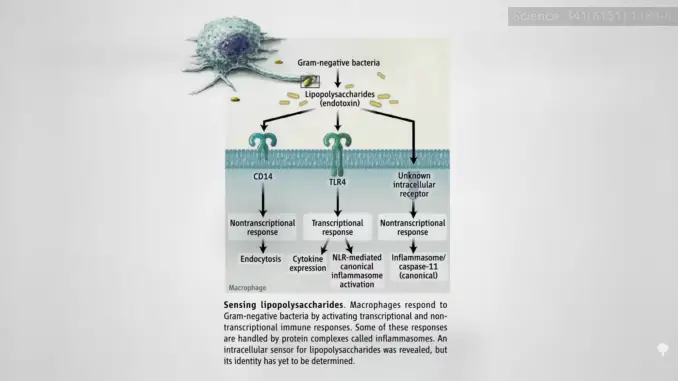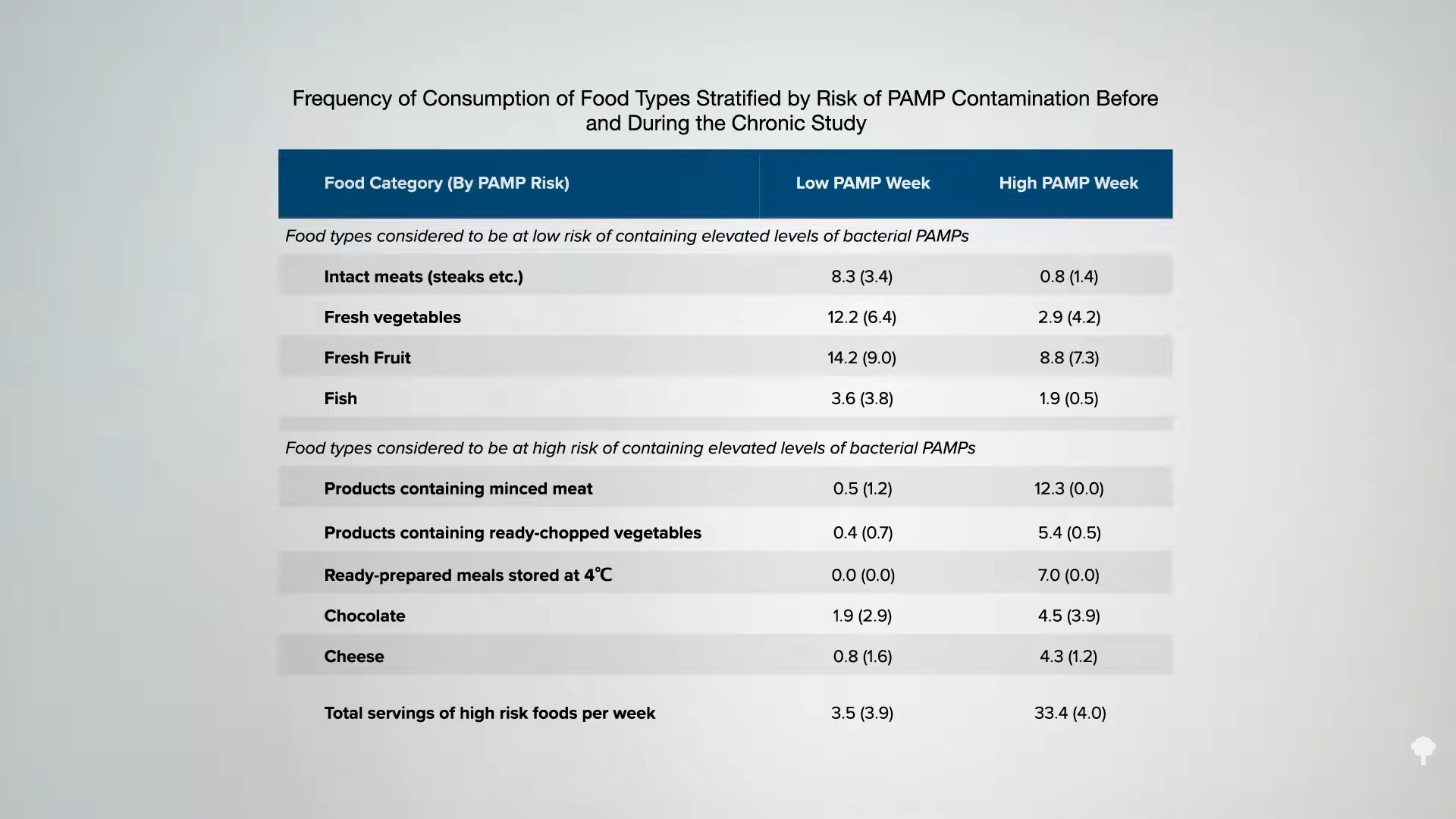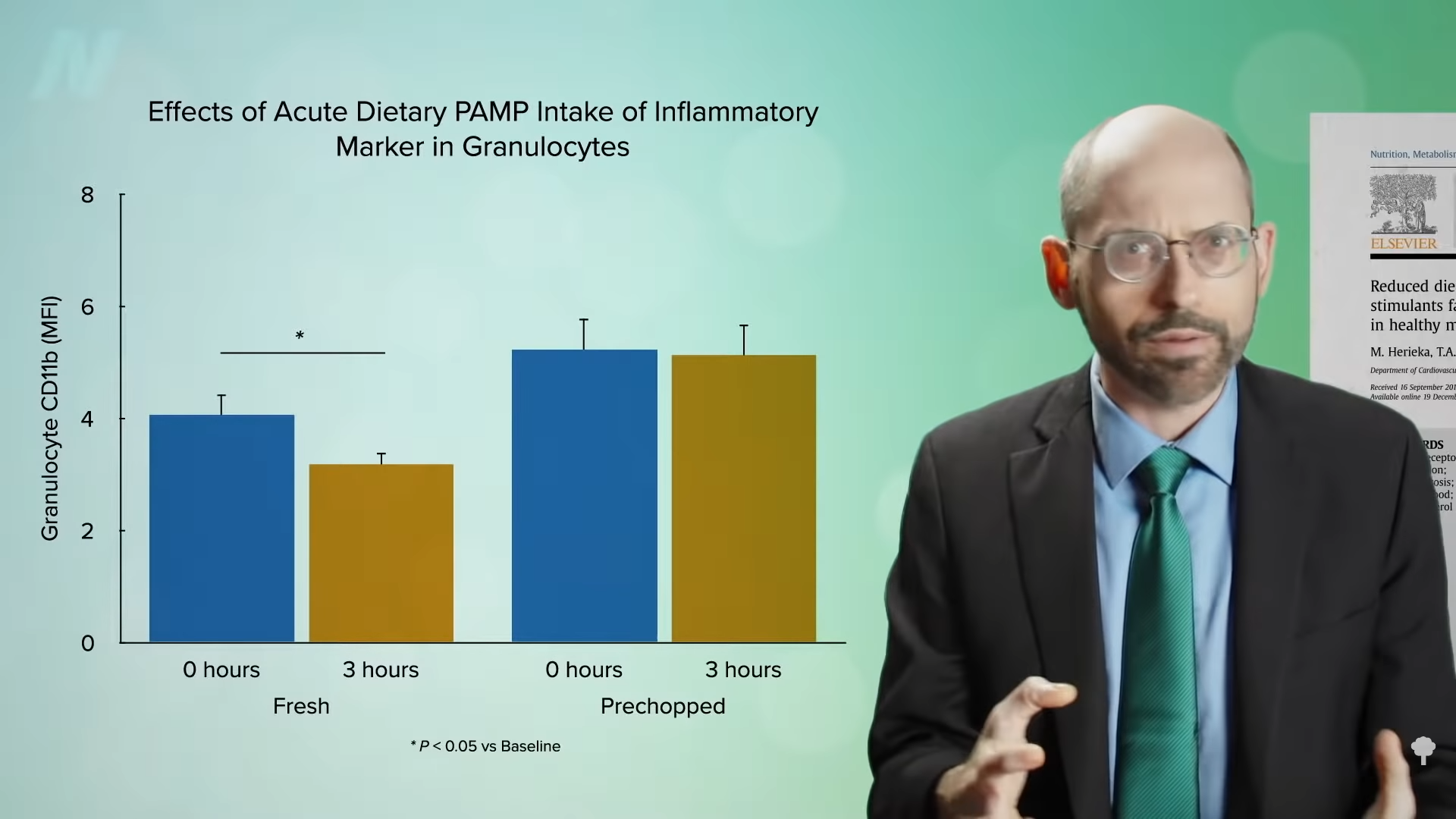
Endotoxins can build up on pre-cut vegetables and undermine some of their benefits.
You may remember when I introduced the endotoxin theory literature in my video The Exogenous Endotoxin Theory, which sought to explain how a single Sausage and Egg McMuffin meal could cripple artery function within hours of consumption. Maybe it’s because such a meal causes inflammation within hours of consumption by inducing low-grade endotoxemia, endotoxins in the bloodstream, as I previously discussed in my video Dead Meat Bacteria Endotoxemia. Endotoxins are structural components of gram-negative bacteria like E. coli, as you can see below and at 0:35 in my video Are Pre-Cut Vegetables Just as Healthy?. Certain foods, like ground meat, have high bacterial loads, so the thought was that the endotoxins in the food were triggering the inflammation.
Critics of the theory argued that because we already have so many bacteria living in our colon, so many endotoxins just sitting down in our large intestine, a few more endotoxins in our food wouldn’t matter much in terms of causing systemic inflammation. After all, we have about two pounds of pure bacteria down there where the sun don’t shine, so there could be about a whole ounce of endotoxin. The lethal dose of intravenously injected endotoxin can be just a few millionths of a gram, so we could have a million lethal doses down there. However, the apparent paradox is explained by compartmentalization. It’s location, location, location.
Poop is harmless when it’s in your colon, but it shouldn’t be injected into your bloodstream or eaten for that matter, particularly with fat, as that can promote the absorption of endotoxins in the small intestine. That goes for well-cooked poop, too.
As you can see in the graph below and at 1:44 in my video, you can boil endotoxins for two hours straight with no detriment in their ability to induce inflammation. You could easily kill off any bacteria if you boiled your poop soup long enough, but you can’t kill off the endotoxins they make, just like you can’t cook the crap out of the meat. The consumption of meat contaminated with feces doesn’t just cause food poisoning. It can spill out onto the animal’s skin during the evisceration process when the digestive tract is ruptured.

Even when slaughterhouse workers trim off “visible fecal contamination,” the trimming itself can, ironically, sometimes lead to an increase in certain fecal bacteria, thought to be caused by “cross-contamination resulting from the handling to removal fecal contamination” from one carcass to the next. Then, even when properly stored in the fridge, endotoxins start accumulating along with the bacterial growth, as you can see in the graph below and at 2:30 in my video.

What about other foods? The highest levels of endotoxins were found in meat and dairy, and the lowest levels in fresh fruits and vegetables. That was testing whole fruits and vegetables, though. “Most spoilage organisms cannot penetrate the plant’s surface barrier and spoil the inner tissues.” That’s why fruits and veggies can sit out in the fields all day in the sun. But, once you cut them open, bacteria can gain access to the inner tissues, and, within a matter of days, your veggies can start to spoil. So, what does that mean for all those convenient pre-cut veggies these days?
While endotoxins were not detectable in the majority of unprocessed vegetables, once you damage the protective outer layers of vegetables, you diminish their resistance to microbial growth. So, while freshly cut carrots and onions start with undetectable levels, day after day after they’ve been chopped, you start to get the growth of bacteria and, along with them, endotoxin buildup—even if they’ve been kept chilled in the fridge. Not as much as meat, but not insignificant either, as you can see in the graph below and at 3:27 in my video. Enough to make a difference, though? You don’t know until you put it to the test.
What would happen if you switched people between foods expected to have a lower endotoxin load to foods containing more endotoxins? For instance, going from intact meat, such as a steak, and whole fruits and vegetables, to more like ground beef, pre-cut veggies, and more ready-made meals, as shown below and at 3:39 in my video. After just one week on the lower-endotoxin diet, people’s white blood cell count, which is an indicator of total body inflammation, dropped by 12 percent, then bumped back up by 14 percent after just four days on the higher-endotoxin diet. They also lost a pound and a half on the lower-endotoxin diet and slimmed their waists a bit. 
They weren’t eating otherwise identical diets, though. It looks like they were eating more meat and cheese on the higher-endotoxin diet and perhaps getting more food additives in the ready-made meals. So, how do we know endotoxins had anything to do with it? That’s where the onion study comes in. Another study was designed based on two meals that differed in their content of bacterial products but were otherwise nutritionally identical. So, researchers compared freshly chopped onion to prechopped onion that had been refrigerated for a few days. The pre-chopped onion wasn’t spoiled; it was still before the “best before” date. So, would it make any difference?
Within three hours of consumption, the fresh onion meal caused significant reductions in several markers of inflammation. That’s what fruits and vegetables do—they reduce inflammation—but these effects were not observed after eating the pre-chopped onions. For example, three hours after eating freshly chopped onions, researchers saw a significant drop in inflammatory status, but there was no significant change three hours after eating the same amount of pre-chopped onions, as you can see in the graph below and at 5:06 in my video. So, it’s not like the pre-chopped onions caused more inflammation, like in the meat, eggs, and dairy studies, but it did appear that some of the onion’s anti-inflammatory effects were extinguished. “In conclusion, the modern trend towards eating minimally processed vegetables”—pre-cut vegetables—“rather than whole [intact] foods is likely to be associated with increased oral endotoxin exposure.” It’s still better to eat pre-cut veggies than no veggies, but cutting your own might be the healthiest.

For some other practical veggie videos and blogs check out the related posts below.
